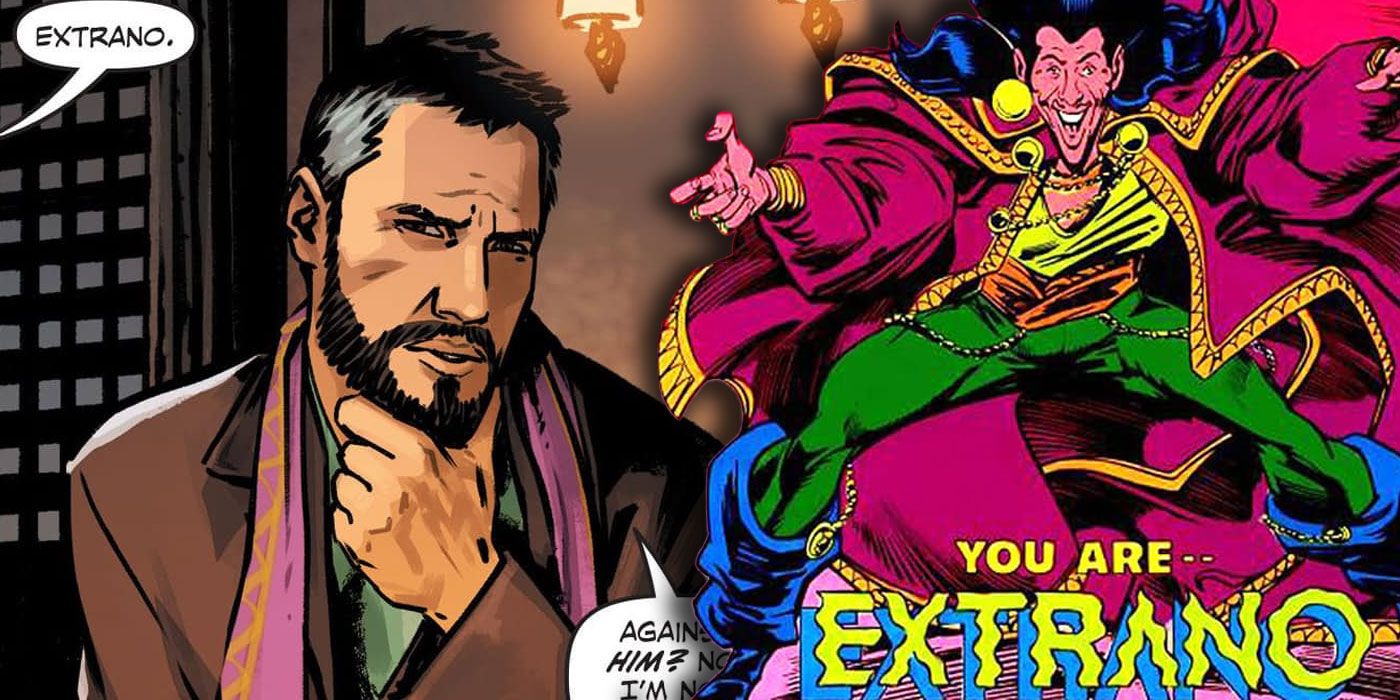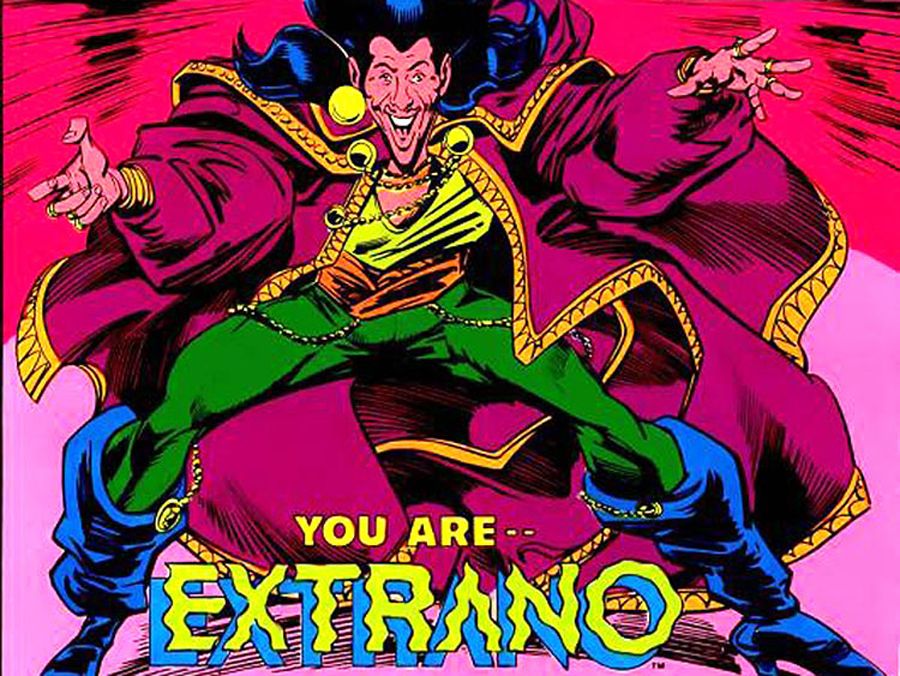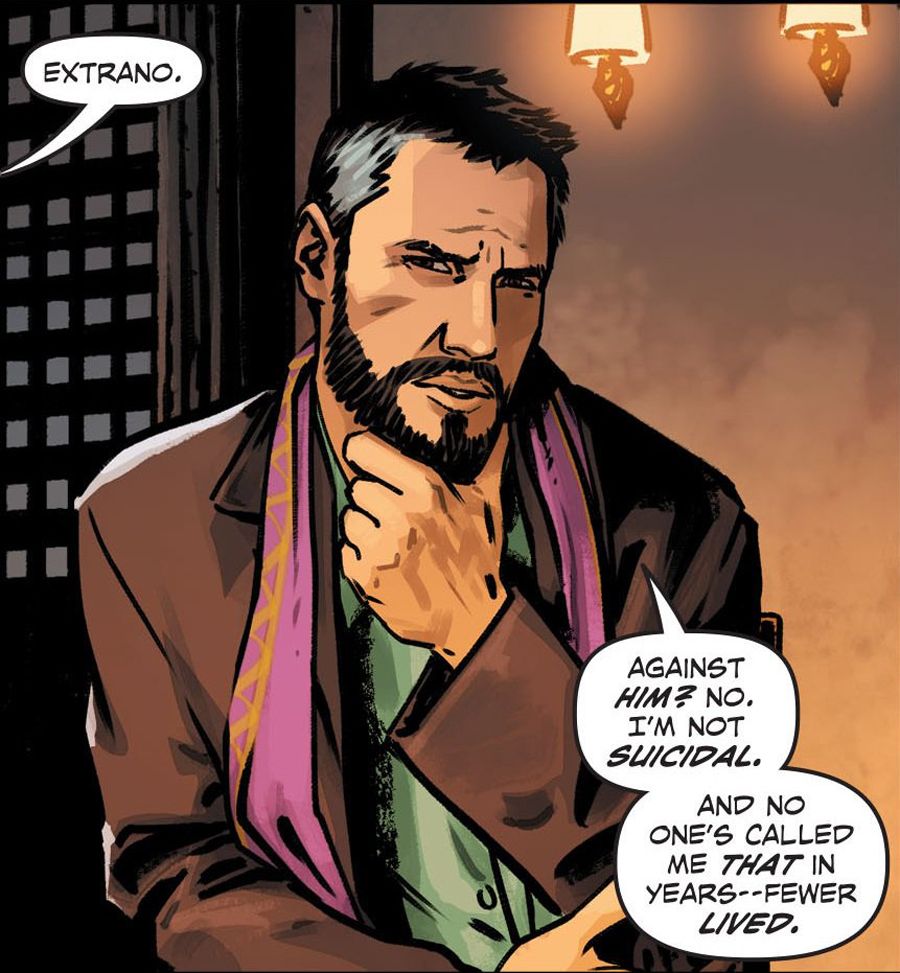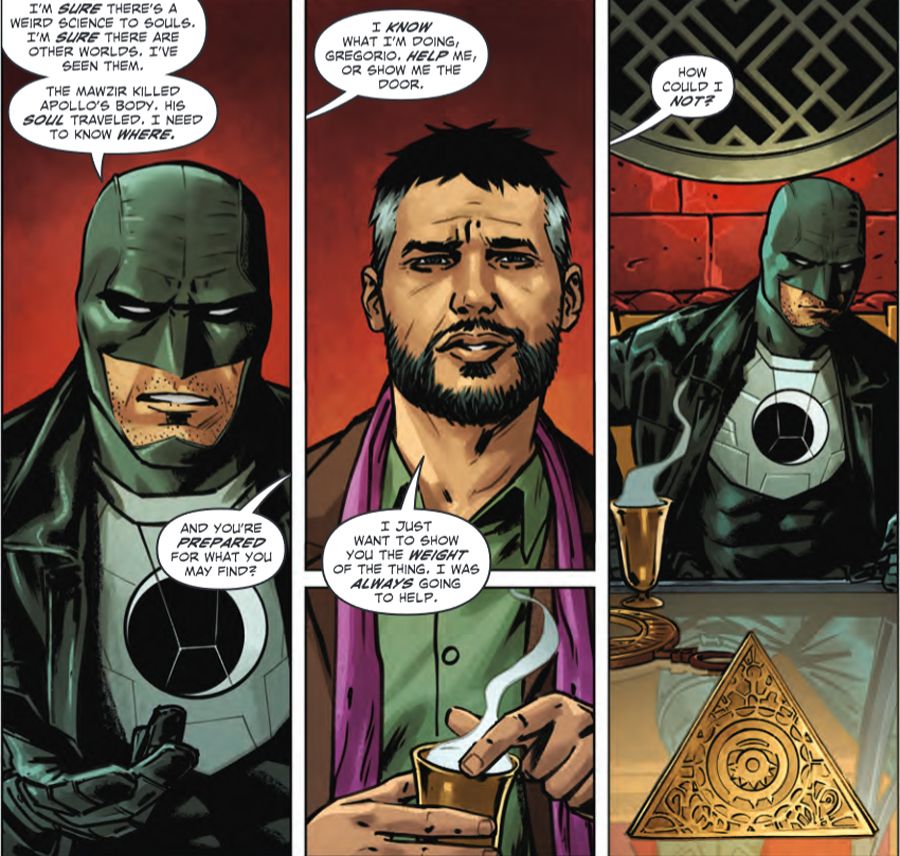Four years before Northstar rocketed out of the comic-book closet, declaring “I am gay!,” there was Extraño, who was far less subtle, to say the least. Long ago relegated to little more than an embarrassing footnote in the history of gay superheroes, the character has unexpectedly returned after more than two decades in "Midnighter and Apollo" -- and he's stranger than ever. Make that Stranger.
Introduced in the 1988 DC Comics miniseries “Millennium,” Extraño (Spanish for "strange") was among a group of people from across the globe selected by the Guardians of the Universe to serve as a superhero team representative of the human race. Dubbed the New Guardians, their ranks included RAM, a Japanese man who could communicate with electronic equipment; Gloss, a Chinese woman who channeled the Dragon Lines of the Earth; Harbinger, known for her prominent role in "Crisis on Infinite Earths"; and Extraño, a Peruvian magician whose most notable ability was to manifest every imaginable gay stereotype of the 1980s.
Although Extraño wasn’t explicitly stated to be gay in the short-lived “New Guardians” spinoff, it was pretty obvious, from his outrageous wardrobe to his Liberace-level jewelry to a vocabulary peppered with “honey” and “sweetie” (he frequently referred to himself as “Auntie”). This was Extraño:
See? As absurd as the character seems – and make no mistake, he was absurd, and more than a little offensive – he wasn’t alone; subtlety was hardly a trademark of “The New Guardians.” Next to Extraño, the series is probably best remembered for the villain Snowflame, whose powers were derived from snorting cocaine. (“Every cell of my being burns with white-hot ecstasy,” he once declared. “Cocaine is my God -- and I am the human instrument of its will!” In fairness, though, that was hardly the first time something like that was said in the ‘80s.)
But wait, there's more: Extraño was also the first HIV-positive superhero, as revealed after members of the New Guardians were attacked by the "AIDS infected" vampire Hemo-Goblin. Did we mention this was the '80s?
"The New Guardians" ended after a mere 12 issues, with some of the team afterward making a handful of appearances before their island base was consumed in 1993 by Entropy in the pages of "Green Lantern." And that was the last anyone saw of Extraño -- until "Midnighter and Apollo" #1.
In addition to reuniting one of superhero comics' favorite couples, the first issue of Steve Orlando and Fernando Blanco's new series dusts off a who's who of (mostly) minor magic users as Henry Bendix seeks out someone at Oblivion Bar -- the former home base of Shadowpact -- to take down Apollo. He's turned down in rapid succession by Ali-Ka Zoom, the homeless street magician from "Seven Soldiers"; Blackbriar Thorn, the ancient druid turned Injustice Society member; December Graystone, aka Blood Mage, one of the League of Assassins; Felix Faust, the longtime Justice League villain; Ra-Man, the reincarnated ancient prince of the Ra-Realm turned occult investigator; Kulak, sorcerer foe of the Spectre and, later, the Justice Society; and the Arkannone, Hell's Lords of the Gun.
Among that motley crew is a drastically different-looking, and sounding, Extraño. Gone is the outlandish hair and jewelry, the only signs of his former costume found in the colors of his shirt and scarf. Although he appears in just one panel, it's obvious he's no longer the "Auntie" of the New Guardians; he sounds downright menacing in response to Bendix's use of his code name, saying, "No one's called me that in years -- fewer lived."
But what initially seemed like a throwaway cameo by a mostly forgotten character grows into much more in Issue 2, as Midnighter seeks the whereabouts of Apollo's soul following his "death" at the hands of Mawzir, the demonic foe of Hitman. His search takes him to Lima, Peru, to the "Sacrarium" home of Extraño, who now goes simply by his real name, Gregorio De La Vega. Think of it as his sanctum sanctorum.
Midnighter didn't wind up in Lima by chance. He knows Gregorio, but hasn't seen him in "an age" -- and there's certainly the hint that their previous encounter(s) may not have ended entirely pleasantly. But more has changed since they last met than the use of his code name: He's settled down with Hugh (whom we might guess is Hugh Dawkins, the Tasmanian Devil), and they've adopted a winged girl named Suri, "whose current incarnation demands careful guidance" (if she's a previously existing character, her identity eludes me). Oh, and he looks the world like Marvel's Master of the Mystic Arts, right down to the graying temples. Did we mention that?
The likeness doesn't end there, however, as Gregorio casts a spell that utilizes Midnighter's soul as a compass, allowing him to listen "beyond our world, beyond the solid, the real" for Apollo's heart. His use of magic is accompanied by M.C. Escher-like effects, vaguely reminiscent of Steve Ditko's "Doctor Strange" work, as the barriers between realities fade away. The same person who decorated the Sorcerer Supreme's Bleecker Street digs may have been called in for the Sacrarium, with its ornate window, and a pyramid tchotchke with a prominent "eye."
You can likely guess where Gregorio finds Apollo's soul, setting up what will undoubtedly be a memorable showdown in Issue 3. But most any magic user in the DC Universe -- Zatanna, John Constantine, Doctor Fate, you name 'em -- could've served that plot purpose. What's interesting is that Orlando decided to reach back into DC history to pluck Extraño -- excuse me, Gregorio -- out of relative obscurity and update and him, without ignoring his past, to make the character a key player in the world of "Midnighter and Apollo."
Clearly Gregorio has tried, somewhat unsuccessfully, to escape the "Extraño" name, and perhaps the baggage that comes with it. But in the decades since he played "Auntie" to the New Guardians, Extraño has lived a life (even as he somehow escaped death); Orlando made sure of that in the course of just four panels, giving him a partner, a child and a connection to Midnighter.
Within that space, the writer has taken a character many thought (hoped?) they've never see again, and transformed into one we want to learn more about (including whether his significant other is the Tasmanian Devil). That's undeniably strange, and wonderfully unexpected.
Here's hoping Extraño Gregorio De La Vega has an even larger role to play in "Midnighter and Apollo."




